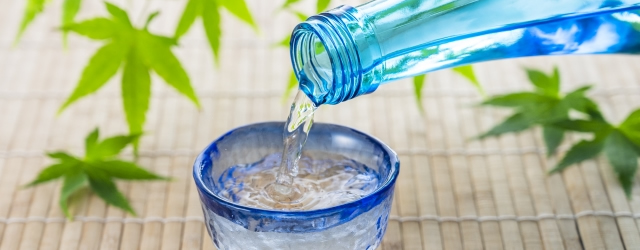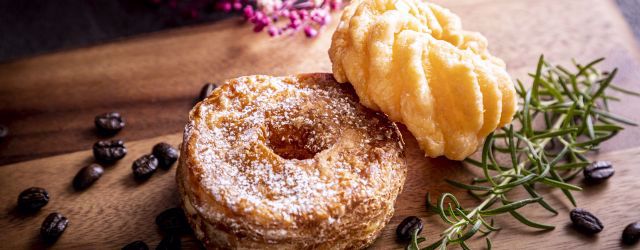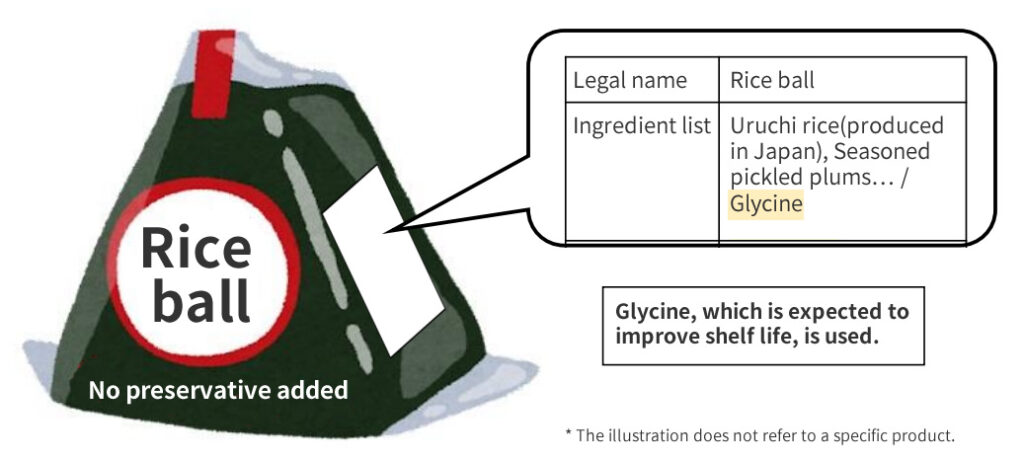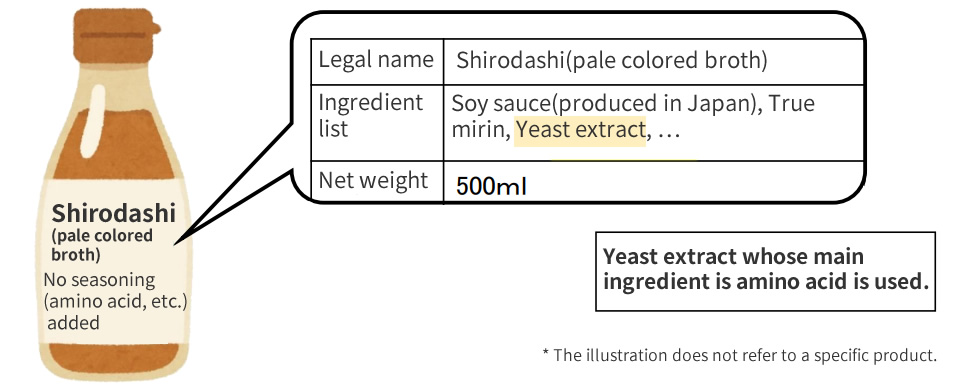
On July 19, 2022, the National Tax Agency issued a notice “Partial revision of the statutory interpretation on Liquor Tax Act and acts /regulations, etc. related to liquor administration (the notice on statutory interpretation).
Labeling standard for manufacturing method and quality for Sake (National Tax Agency Notification No. 8 of 1989) was enacted in November 1989 (applied in April 1990) based on the provisions of Act Concerning Liquor Business Associations and Measures for securing Revenue from Liquor Tax (Act No. 7 of 1953). In 1989, with the development of brewing technology and the diversification of consumption, various types of Sake with different manufacturing methods and qualities, such as “Ginjo-shu”, “Jummai-shu (Pure-rice sake)”, and “Honjozo-shu (“True-brew” sake)”, became available at liquor stores. However, since there were no legal rules for labeling these types of Sake, there were an increasing number of consumers complaining they were unsure of the quality of the sake. Therefore, the standard was established to help consumers select products.
In addition to stipulating requirements for the labeling of Special designation names, the standard also stipulates necessary labeling items for Sake in general from the viewpoint of protecting the interests of consumers, in order to ensure manufacturing method and quality suitable for labeling Special designation names and to ensure proper labeling.
In this article, we would like to review the details of the revision, which was made from the viewpoint of making labeling easier to understand for consumers in Japan and overseas and improving the brand value of Japanese Sake, along with an overview of the labeling standards before the revision. (*Items in red have been reconsidered.)
Overview of Labeling Standards (before revision)
Special designation name labeling
Sake with special designation name means “Ginjo-shu”, “Junmai-shu” and “Honjozo-shu”, and those have the respective prescribed requirements. The names are allowed to label only on those meeting the requirements. Special designation names are classified into eight types according to differences in ingredients, manufacturing methods, etc.
Special designation names : Ginjo-shu, Daiginjo-shu, Junmai-shu, Jummai ginjo-shu, Jummai daiginjo-shu, Special jummai-shu, Honjozo-shu , Special honjozo-shu.
Required indication items
In principle, for Sake, the following items are to be labeled in Japanese characters of 8-point type or larger.
- Ingredient name
- Year and month of manufacture
- Precautions for storage and drinking
- Country of origin (for imported products.)
- Labeling of products using foreign Sake
In addition to the above, Sake manufacturers are required to label the following information.
Name of manufacturer, location of manufacturing plant, net weight, Sake (the name itself), alcohol content
Voluntary labeling items
The following items may be labeled when applicable to the respective requirements.
- Variety name of raw rice
When the ratio of raw rice used exceeds 50%, it can be indicated as “Yamada Nishiki 100%”;, for example, together with the ratio of use.- Place of origin of Sake
It can be labeled when all of the Sake is brewed in the production area.- Storage years
Sake stored for more than one year can be labeled with the number of years rounded down to the nearest year.- Undiluted sake
After production, it can be labeled on Sake without adjusting content such as alcohol by adding water.- Pure sake
It can be labeled on Sake which is not heated at all after production.- Fresh storage sake
It can be labeled on Sake that is stored without heat treatment after production and then heat-treated at the time of shipment.- Ki-ippon (pure and unadulterated sake)
It can be labeled only on Junmai-shu brewed solely at a single production facility.- Cask sake
It can be labeled on Sake stored in wooden casks with woody aroma.- Terms that give the impression of superior quality, such as “the finest”;, “excellent”; and “high quality”;, etc.
When a company has more than one Sake of the same type or brand, it can be labeled on the one with superior quality (limited to cases that can be objectively explained such as from the ingredients used).- Award Description
In the case where Sake has received an award from a public organization such as the national or local government, it can be labeled on the Sake.
Items other than the above may be indicated only when they are separately explained based on the facts.
Prohibited labeling items
The following items are not allowed to be indicated on containers or packaging of Sake
- A term that refers to the highest grade in production method and quality of Sake in the industry such as “Best,” “First,” “Representative”, etc.
- Terms meaning patronized by public organizations or similar terms to those
- Use of terms similar to Special Designation Sake name for other products than Special Designation Sake
Main points of the revision
Revision of indication of year and month of manufacture
– Regarding the indication of year and month of manufacture, changed from Required labeling items to voluntary labeling items in line with Codex Standards, (the international food standards) and Food Labeling Standards.
-Instead of the current handling of indication of year and month of manufacture (in principle, indication of the year and month of packing in a container), date indication (date of shipment, etc.) in accordance with product characteristics is allowed.
(Note) Specific date indication is clarified by JAPAN SAKE AND SHOCHU MAKERS ASSOCIATION.Revision of the award description
Eliminating the current handling of indication of awards (Indicating the institution and year of the award is allowed only for the award by public organizations) and allowing indication of awards granted by organizations as well as public organizations.
In accordance with Food Labeling Standards, terms that mislead people into believing that the product has won awards at a competition, etc., or terms that mislead people into believing that the product is recommended by public organizations are added to the list of prohibited labeling items.Other revision (notifications)
In addition to the above, the related provisions in the handling notice were revised to allow the combined use of the terms of “Undiluted sake”;, “Unpasteurized sake”;, “Fresh storage sake”;, and “Cask sake”; such as “Raw undiluted sake”;, “Raw Fresh storage sake”;, etc.
* Applicable from January 1, 2023. Necessary transitional measures are to be established for Sake transferred out before the applicable date.
The above is an overview of labeling standards for manufacturing method and quality for Sake and the content of its revision. Making the labeling easier to understand by bringing the content in line with international standards and food labeling standards, and enhancing the brand value by labeling in accordance with product characteristics are considered to be the background of the revision. It would be recommended for those who handle Sake to look over the contents of the revision once.
We hope you find this information useful.
References
- Overview of “Labeling standard for manufacturing method and quality for Sake” (* The content is the old version.)
- Partial revision of the statutory interpretation on Liquor Tax Act and acts /regulations, etc. related to liquor administration (statutory interpretation)
- Regarding the partial revision of Labeling standard for manufacturing method and quality for Sake
Newsletter Signup
We issue monthly e-newsletters, which provide you with the latest updates on food labeling/regulations in Japan.
If you want to make sure to not miss any issue, please click below.
Related Service
Research Services on Ingredients & Food Labeling -For the Japanese Market-
We verify the conformity of ingredients and additives with the standards for use in Japan based on specifications such as formulation lists. We also verify the conformity of the proposed labeling of ingredient names, nutrients, etc. with the labeling standards based on specifications such as formulation lists.
Label bank Co., Ltd. Regulatory inspections and Consulting Research staff
Specializing in biology, he is engaged in research work on ingredients and additives imported to Japan from overseas.






